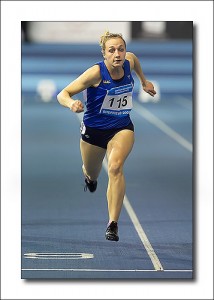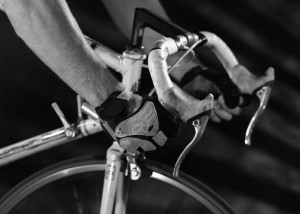Sitting on a notepad next to me is a list of topics I plan to write about on this blog. In the drafts section of the blog editor are a handful of posts I’ve started but that aren’t quite ready to be published. And on the “notes” area of my Outlook program is another long list of things I’d like to research and write about here. Rather than complain about how there never seem to be enough hours in the day, as I’ve done before, I’m going to attempt the “day by day” strategy and just fit in what I can. On my run this morning I was thinking about all the things I haven’t done and all the things I have yet to start, blog posts being one of them.
I thought it might be helpful for both me and you to think through what has happened so far, reflect on how some things have been going, and figure out what’s next on life’s list. Ideally at the end, you’ll have something to look forward to reading and I will be accountable for getting it written.
Since the March 1st marathon and a month of recovery from ITBS, I am grateful to be back running again on a consistent schedule. I got very focused on strength training for a while, but there is some vortex that running pulls me into and it’s all I want to do. Since running had made its way back into my life, the weights have taken a back seat which goes very much against my original goal of having a better balanced work-out plan the second time around. Knowing that I will be in training mode soon, I need to work in the balance of cardio and strength training. So I am sorry to report that with the exception of core work-outs I have let the arm and leg exercises slide, but this will change starting today.
I also reported that I was going to be doing my first adventure race. Due to my own poor planning and schedule conflicts, I did not make it out to Rocky Gap for what would surely have been one of the more gratifying and challenging races on my calendar. Doing an adventure race is definitely still on my radar, however I think I’ll start with trail running first and build up an actual understanding of “off road” training before heading into the wilderness.
Cross-training is the one thing that has managed to remain a part of my new routine. Spin class continues to be at least a one time per week work-out for me and while I have yet to say that I love spinning, I can say I love the work-out that spinning provides. It makes me sweat like no other exercise makes me sweat and I am acutely aware of my beginner level skill at spinning so I welcome the challenge each time I go to the class, including the challenge of waking up at 5 a.m. to get to class on time. These are some of the things that have been going on over the last few months.
What’s Next?
With regard to races, I think I finally have my summer schedule figured out which is a huge relief because now I can start training and get some order back in my life. I plan to do the Ben Moore Memorial Half Marathon August 1st, followed by my first sprint triathlon in upstate New York with my brother-in-law on August 9th. I realize that back to back races might not be ideal but I feel as though with a solid three months to train for both that the tri training will keep me even better conditioned for a summer half marathon. The Annapolis 10-Miler is one of my favorite races and is August 30th, so that will be on the schedule as well. In June we’ll find out if I get into the NYC Marathon, so we’ll cross that marathon bridge when we come to it.
In addition to training for the above mentioned races, there will be a host of things I have to learn about triathlons and I plan to write about them as I discover the answers to my new questions. I am training again with my Polar heart rate watch and this is a subject I will cover here once I get it all figured out. I have some definite “user error” issues with the watch as well as a mental block in regard to how to train by heart rate; but I will learn and share.
I will continue to do reviews of training logs and have a couple more weeks using the Runner’s World log before I write the review, but I am eager to move on to the next log; we’ll just leave it at that for now.
One category that stands out on my multiple lists of blog topics are things in the “health” category. This blog is “Health and Running” and while running is by default a healthy thing to do, it is by no means the end all be all of health. Food and nutrition is a whole category of posts but as I am not a food or nutrition expert, I’m just a normal eater, I will explore some of my own food and nutrition questions and bring you the answers I find. A friend of mine just started a site aimed at helping others make informed eating decisions and with his knowledge and that of many other helpful resources and healthful eating experts, I imagine we will start to cover more of the “health” in Health and Running.
So that’s what’s next on my plate; feel free to add to it if you want. What’s next on yours?


 There was a fun article in the May 2009 issue of
There was a fun article in the May 2009 issue of  My sister-in-law’s wedding was at a beautiful
My sister-in-law’s wedding was at a beautiful  At the suggestion of a friend of mine who is an NSPA-certified instructor, I got a Polar
At the suggestion of a friend of mine who is an NSPA-certified instructor, I got a Polar 
 For the last couple months I’ve been trying to figure out what I would train for next and at first I thought it would be a summer half marathon (and it still might be), but now it is most definitely training for
For the last couple months I’ve been trying to figure out what I would train for next and at first I thought it would be a summer half marathon (and it still might be), but now it is most definitely training for A couple years ago my husband and I went to watch his sister and her fiance and some other friends finish the first
A couple years ago my husband and I went to watch his sister and her fiance and some other friends finish the first 